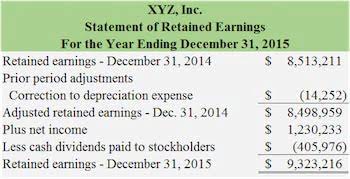Content

A controllable cost report gives you an idea of where the company spends its money, which potentially affects how much it will earn or if money is being lost. Your gross profit is the difference in value https://kelleysbookkeeping.com/bookkeeping-payroll-services-at-a-fixed-price/ between the selling price of a dish and the cost of the ingredients and materials used to make a dish (your COGS). Now you can type in profit and loss or find it under the business overview section.
This key figure will indicate how efficiently you are controlling your inventory and pricing your items. Keeping track of this indicator will help you reduce and stabilize your inventory costs. Some restaurants set up weekly accounting periods while others do it monthly. Once you know when your accounting periods will be, it can make it easier to compare different aspects of your business.
Related Posts
There are some key financial analysis tools that you will want to implement when reviewing your financial reporting. Financial statements should be reviewed and analyzed on a monthly basis so if something is off track, it can be caught early before it snowballs. If you didn’t track sales, then you wouldn’t have a clue as to how your restaurant is performing financially. In addition, keeping track Bookkeeping for LLC: Best Practices and FAQs Shoeboxed of revenue will give you a better picture of what source is the most profitable and bringing in the most money. When you have all of these reports, it makes it easier to predict future sales, create budgets, track transactions, identify financial problems, and monitor changing costs. When you own a restaurant, proper bookkeeping and accounting are necessary if you want to keep your doors open.
Xero has tools for managing invoices, bank reconciliation, purchases, expenses, inventory, and more. It can be used for different types of small businesses and isn’t specific to restaurants, so you may need to take your time setting up the software and creating restaurant-specific processes. When it comes to restaurant accounting, the chart of accounts categorizes the money you spend and receive. The chart of accounts records high-level transactions like revenue, expenses, assets, liabilities, cost of goods sold, and equity. Each of these buckets is further categorized into smaller ones, such as meat costs, alcohol costs, staff wages, marketing, utilities, laundry, etc. Effective bookkeeping is a fundamental aspect of running a successful restaurant.
Best Accounting Software for Restaurants
Outsourcing your bookkeeping is more affordable than you would think. We save you money the moment you hire us by cutting out the expensive cost of hiring an in-house CFO. Lastly, you’ll want to get the word out that you’re open for business. That may include newspaper ads and billboards, in addition to social media. Social media, at least, is free — and you’ll have direct access to the customer marketplace you want to serve. First, run a profit and loss by going to reports on the left-hand side and selecting reports.
- It can be integrated with your POS and bank and offers payroll services.
- Sherman Oaks Accounting & Bookkeeping powered by One Source Services, Inc. has seen firsthand how poor bookkeeping can negatively impact a restaurant’s bottom line.
- We chose ZIpBooks as our accounting software for restaurants with the best price because it offers a free option, which is great if you want to try it out or only need limited features.
- Running a restaurant can be an incredibly rewarding job, but it’s also a challenge.
- The only drawback to Toast payroll is that right now they do not have a QuickBooks integration.
- To put it lightly, it’s pretty intimidating – not to mention time-sensitive, time-consuming, and accuracy-dependent.
- It takes more than a passion for food to run a successful restaurant.
However, I would say that Gusto is as good if not better than ADP. The pricing is much simpler, cheaper, and easier to understand than ADP. You can then upload your invoices to Bill.com to allow your accountant to code them properly. Now that you have Shogo connected to your POS, it’s time to plug it into QuickBooks Online, or your preferred accounting system. So, for this example, we’ll utilize Toast, although the setup process will more than likely be similar or the exact same for the rest of the systems.
